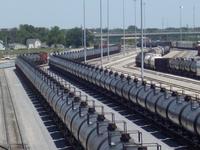-
Connecticut and Kansas implement next-gen 911 system
Connecticut and Kansas are both currently installing the next generation of 911 telephone systems (NG911) in different cycles, but both are seeing the added benefits of the evolved system.NG911 will allow both states to offer the services of up-to-the-second multimedia information, including cell phone texts and video, as responders rush to an emergency site.
-
-
EMS drone dramatically increases survival chances of heart attack patients, accident victims
A Dutch graduate student has designed an unmanned, autonomously navigating mini airplane that can quickly deliver a defibrillator to where it is needed. When the emergency services receive a cardiac arrest call, this drone can quickly deliver a defibrillator to the emergency scene. Via a livestream video and audio connection, the drone can also provide direct feedback to the emergency services and the persons on site can be instructed how to treat the patient. The drone finds the patient’s location through the caller’s mobile phone signal and makes its way to the location using GPS. The drone can carry up to four kilograms of medical equipment.
-
-
Digital database, tablets to provide Houston firefighters with fire scene-relevant information
Firefighters in the greater Houston region will soon rely on tablets to provide information about certain buildings before they arrive at the scene of a fire. An anti-terrorism grant awarded by DHS has paid for the development of a digital database of high-risk structures, including buildings which are critical to the state and city daily operations. The tablets will replace binders full of papers stored in the back of fire engines and command vehicles, which were rarely used because they were difficult to reach while en route to a scene.
-
-
The Big One will have frightening consequences for Los Angeles: Scientists
Scientists cannot accurately predict when California’s next massive earthquake – or, the Big One – will strike, but they can predict the effects, and it is frightening. Scientists with the U.S. Geological Survey (USGS) say these effects will include powerless rescue services, widespread fire damage, and no fresh water for months on end. The 1994 Northridge Earthquake was the region’s the last mega-quake, but scientists say that “When we have the San Andreas earthquake, that earth fault will probably be about 20 to 30 times larger than the fault that produced the Northridge earthquake [which still resulted in $20 Billion in damages].”
-
-
Start-ups offer apps which help people cope with disasters
Open data policies which allow government agencies to share public information with citizens and the private sector have made California welcoming to startups dedicated to helping communities recover following a disaster.For example: Appallicious offers an app which allows subscribed cities and towns to select from hundreds of data sets, then share with the public, information on evacuation routes, current hazards, and location of critical resources.BlueLine Grid allows public employees from different agencies to communicate with each other during a crisis.SeeClickFix is connecting residents to their local government.
-
-
Medical registry systems are becoming part of emergency preparedness plans
Communities across the country are exploring medical registry systems as part of their emergency preparedness plans. Using medical registries for emergency planning has been critical for New Orleans city officials, especially after Hurricane Katrina.St. Louis deployed its Functional Needs Registry after a power outage occurred in 2006. Experts note, though, that just because residents are listed in the city’s registry does not mean that help and services will always be delivered during emergencies.
-
-
Smartphones can save life in health emergencies
MAs more Americans adopt smartphones for communicating, managing calendars, and storing contacts, but these all-in-one devices could also be used to save lives in health emergencies. Companies are developing apps that allow users to store health data which can then be accessed by emergency services personnel or physicians.
-
-
A drone finds natural disaster survivors through their cell-phones
During his semester project in Computer Science at the École polytechnique fédérale de Lausanne (EPFL), Jonathan Cheseaux developed a system for locating a person via his or her mobile phone with a drone. This device could be used to find victims in natural disasters.
-
-
Training volcano scientists from around the world to predict, respond to eruptions

Scientists and technicians who work at volcano observatories in eleven countries visited the U.S. Geological Survey’s Hawaiian Volcano Observatory earlier this month to learn techniques for monitoring active volcanoes. The International Training Program in Volcano Hazards Monitoring is designed to assist scientists from other nations in attaining self-sufficiency in monitoring volcanoes and reducing the risks from eruptions.
-
-
Free app alerts CPR-trained individuals to a heart attack case in their immediate vicinity
Speed and timeliness is instrumental to saving the life of a victim of cardiac arrest, so Santa Clara Countyagencies have adopted PulsePoint, a free mobile application (app) which uses location-based technology to alert CPR-trained residents and bystanders if someone in their immediate area is experiencing sudden cardiac arrest. Once alerted, residents can decide whether they are available to reach the victim and begin resuscitation until official emergency responders arrive.
-
-
Feds, rail operators, Washington State embroiled in crude oil shipment disclosure dispute

Last month the U.S. Department of Transportation(DOT) ordered rail carriers with trains carrying crude oil to notify state officials in the states through which the trains pass about the volume, schedule, and routes of these trains. The amount of crude oil transported by trains has grown dramatically – from 6,000 carloads in 2005 to more than 400,000 carloads in 2013. The increase in the volume of crude oil shipping has been accompanied by a sharp rise in the number of accidents and derailments. DOT’s order was meant to allow states’ first responders to be prepared, but the railways treat shipping information as “security sensitive” and refuse to share it with states’ officials unless the information is distributed to emergency response groups for planning purposes only. Washington State says that state laws require that such information be made public.
-
-
Rio builds a high tech integrated urban command center

Rio de Janeiro is one of the most densely populated cities in South America. Much of the city is vulnerable to flooding, and about three-quarters of Rio’s districts have areas at risk of landslides. High temperatures can make living situations unbearable. In addition, a high crime rate and poor infrastructure make the city difficult to govern. In preparation for the 2014 World Cup and 2016 Summer Olympics, authorities are looking to improve response times to disasters and establish a more efficient system to deal with the city’s many challenges. One of the solutions is a high tech integrated urban command center — Centro de Operações Preifetura do Rio de Janeiro (COR) – which unites Rio’s thirty departments and some private suppliers in a single monitoring room where operators can track real-time conditions of the city and coordinate a response to emergencies and disruptions.
-
-
Texas cities adopt 911 texting

Adding to the rising number of U.S. cities that accept 911 emergency texts, North Texas public safety agencies will now institute the procedure at their response centers. 911 emergency texting not only helps the deaf, but it better caters to younger generations that do not recognize as much the divide between text and voice communications. The texting of additional media such as photos before the responders reach the site could also have a profound impact on the development of an emergency situation.
-
-
Connecticut mulls regional 911 authority
Connecticut House Bill 5531, if passed, would authorize the towns of East Lyme, New London, and Waterford to establish a municipal body to operate all 911 call centers in region. Creating a unified authority will allow for more efficient dispatch operations, reduce operating cost among the three towns, and will also equalize the towns’ liability should a lawsuit stem from a 911 call response. Critics disagree.
-
-
Predicting sliding mountain slopes
If entire mountain slopes start to slide, danger threatens. It is not always easy to predict and monitor these mass movements. In an international project, scientists combined numerical models with microwave radar systems in Northern Tyrol — with promising results. The Steinlehnen slope in Northern Tyrol (Austria) started to move in 2003. Rockfalls threatened people, streets, and buildings. Meanwhile, peace has returned; although the slope is merely “creeping,” Steinlehnen has become an interesting research object for scientists in recent years.
-
- All
- Regional
- Water
- Biometrics
- Borders/Immig
- Business
- Cybersecurity
- Detection
- Disasters
- Government
- Infrastructure
- International
- Public health
- Public Safety
- Communication interoperabillity
- Emergency services
- Emergency medical services
- Fire
- First response
- IEDs
- Law Enforcement
- Law Enforcement Technology
- Military technology
- Nonlethal weapons
- Nuclear weapons
- Personal protection equipment
- Police
- Notification /alert systems
- Situational awareness
- Weapons systems
- Sci-Tech
- Sector Reports
- Surveillance
- Transportation
Advertising & Marketing: advertise@newswirepubs.com
Editorial: editor@newswirepubs.com
General: info@newswirepubs.com
2010-2011 © News Wire Publications, LLC News Wire Publications, LLC
220 Old Country Road | Suite 200 | Mineola | New York | 11501
Permissions and Policies
Editorial: editor@newswirepubs.com
General: info@newswirepubs.com
2010-2011 © News Wire Publications, LLC News Wire Publications, LLC
220 Old Country Road | Suite 200 | Mineola | New York | 11501
Permissions and Policies
